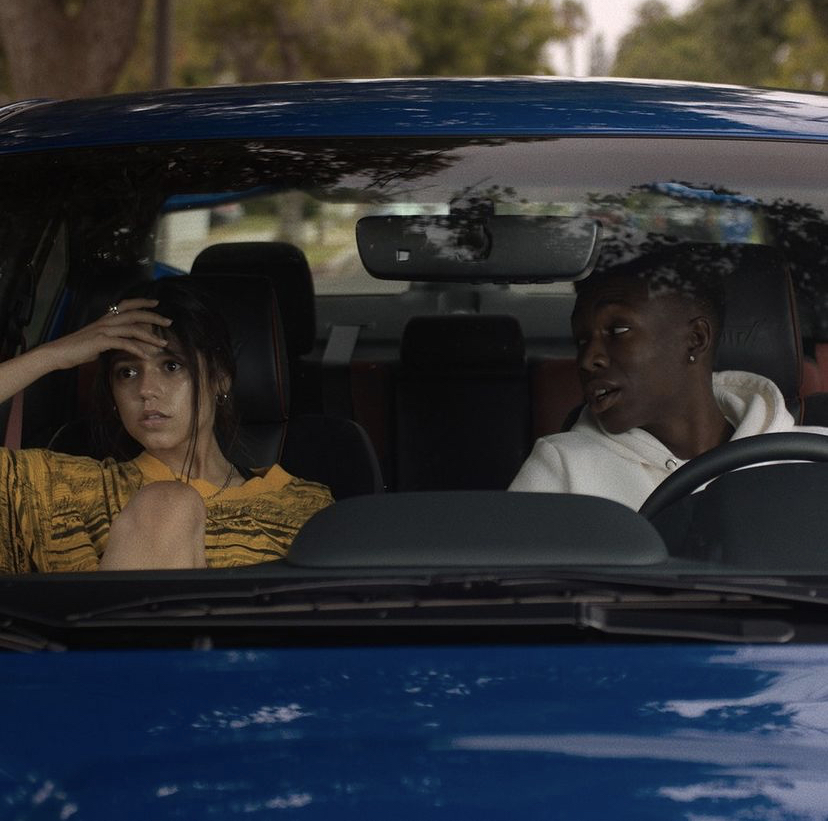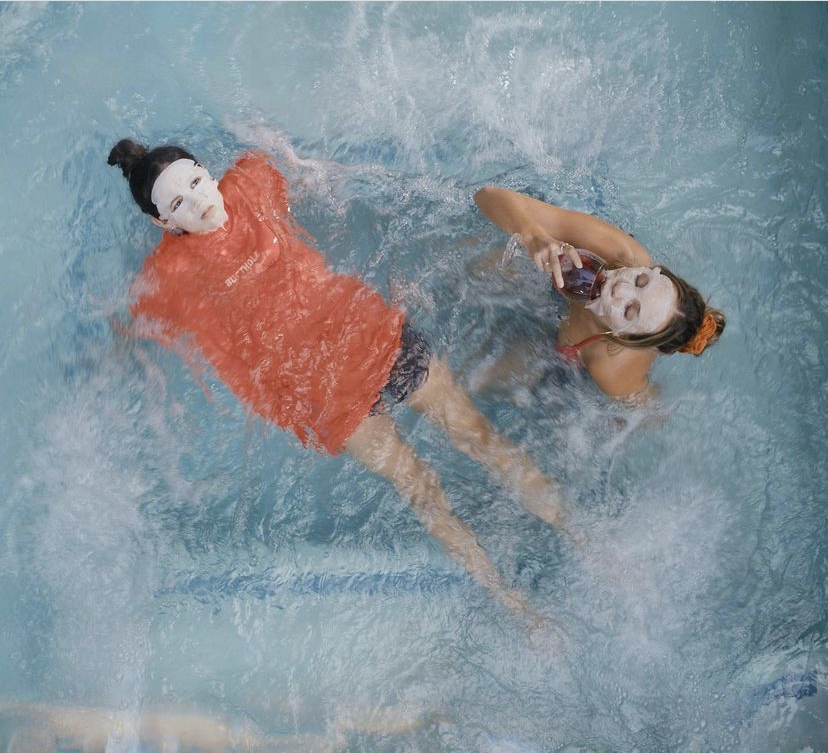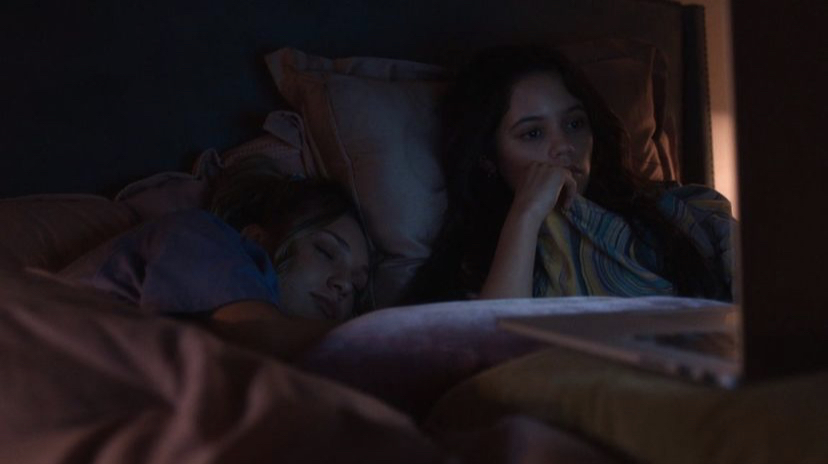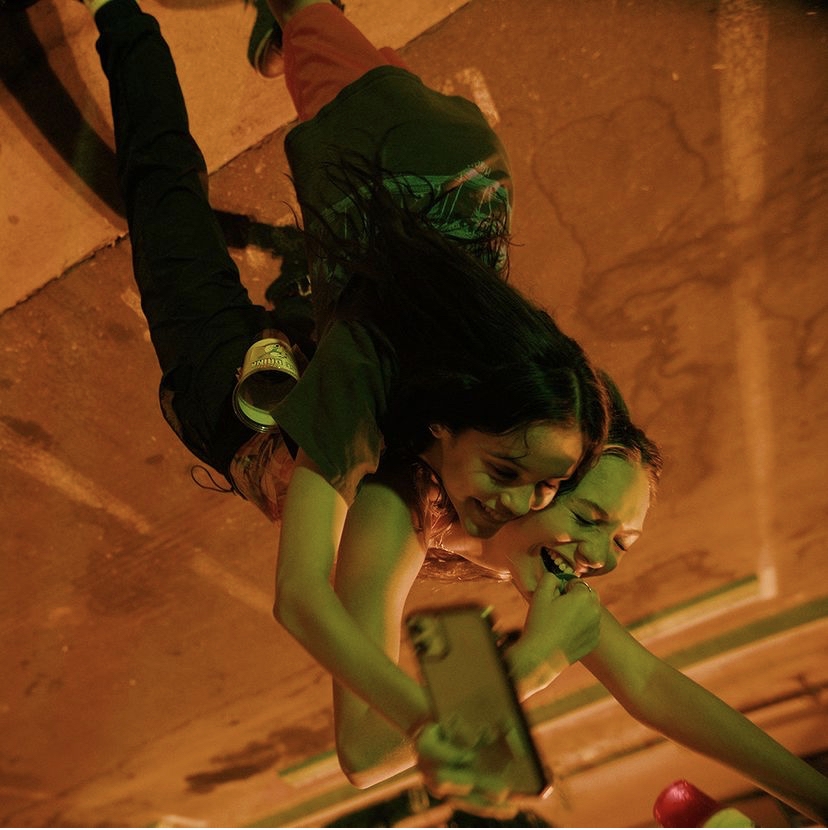Editor’s Note: This review contains spoilers for “The Fallout.”
“The Fallout,” a film about the aftermath of a school shooting, was released on HBO Max on Jan 27. Following the life of high school student Vada Cavell (Jenna Ortega), the film tracks feelings of grief, loss and hopelessness that manifest after a shooting at Cavell’s school. Written and directed by Megan Park, “The Fallout” was acclaimed as a success at the South by Southwest festival, and won the Grand Jury Prize in the Narrative Feature Competition. While the content of this film may be triggering for some viewers, it unveils the real, unfiltered and cruel nature of how trauma not only haunts school shooting survivors, but also their loved ones.
The film opens with awkward tomboy teen Vada getting ready for school with her younger sister Amelia (Lumi Pollack) in the morning before driving to school with her best friend, Nick (Will Ropp). In the middle of school that same day, Vada goes to the restroom where she meets popular dancer and social media influencer Mia Reed (Maddie Ziegler) doing her makeup for photo day. While the two converse, gunshots are heard in the distance, followed by horrified screams from students. The two immediately huddle inside of a toilet cubicle and step on top of the toilet seat rims to hide. They are soon joined by classmate Quinton Hasland (Niles Fitch) who runs into the cubicle beside theirs to hide from the shooter. Vada and Mia soon notice that Hasland’s shirt is covered in his brother’s blood. As they await for the cops to arrive, Mia pukes in fear, Quinton sobs and Vada struggles to catch her breath.
The rest of the movie deals with Vada’s attempts of moving on by closing herself off to her entire family. She reluctantly begins to attend therapy sessions, and strikes up an unlikely friendship with Mia. While Nick becomes a gun control activist, Vada searches for a reason for the tragedy and why she survived. In attempts to seek resolution, she pursues emotional connections to help her escape from her trauma, which she attempts to do by sleeping with Mia and kissing Quinton. Feeling out of control, she takes ecstasy in class to numb the pain and ends up chewing so hard on her pen that its ink bursts inside of her mouth.

With Vada still refusing to open up to her therapist (Shailene Woodley), she ends up going back to school but avoids using the restroom due to trauma. The sound of a boy crushing a soda can ultimately shocks her into peeing herself. Later, her friendship with Nick hits the rocks due to their differences on how they choose to cope with the shooting.
In the movie’s final scenes, Vada opens up to her therapist and reconciles with her family members. Amelia reveals that she blamed herself for being the reason why Vada was stuck hiding in the restroom instead of her guarded classroom, but Vada refuses to think so and inside comforts her. Vada also apologizes to her mother (Julie Bowen) for keeping her in the dark. Meanwhile, her father (John Ortiz) has a heart-to-heart talk with her where she finally admits to being scared of going to sleep and going to school. Despite sleeping together, Vada and Mia choose to remain friends. The movie ends with Vada happily texting Mia before she gets interrupted by a news alert of another school shooting in Ohio, causing her to spiral and cry after being reminded of her own trauma all over again.

To avoid glorifying violence, director Megan Park intentionally tucked away the actual scenes of the shooting. Instead, she focuses the cinematography on the terror in Vada, Mia, and Quinton’s eyes to reveal how horrific the incident was. Instead of showing students and teachers hiding in classrooms or the gun shooter sneaking around the hallways, Park forces the audience to depend on what they hear to gauge what is happening, just like the three survivors do. By placing the audience inside of their shoes, Park forces them to be consumed by the emotions and internal responses of the characters as if they were their own. This phenomenon is known as “experience-taking.”
“The Fallout” smartly uses foreshadowing to drive its plot. At the start of the film, Vada uses the restroom in the middle of school to call her sister who had just gotten her period, foreshadowing the shooting that soon occurs. In both scenarios, blood is shed from the bodies of these young children and a loss of innocence ensues. While Amelia’s menstrual period represents her journey into womanhood from childhood, the young victims in the gun shooting have either lost their lives or have to live with the trauma for the rest of their lives.
The film arguably also captures the essence of Gen-Z culture, adding realism to a story already too relevant to the Gen Z population. While Mia is a social media dancer and generates a mass following on Instagram, Amelia is an aspiring social media influencer who practices a TikTok dance in the background as Vada texts Mia. In reference to the Black Lives Matter movement, a Black Lives Matter sign is seen hanging in a suburban window through a poetic shot while Nick’s activism in organizing pro-gun control marches represents Gen Z stepping in to raise awareness of racial issues, especially during the George Floyd protests back in May 2020.

Most notably, “The Fallout” does not sugarcoat how one can easily heal from trauma. The ending suggests that Vada will always be haunted by the memories of her school’s shooting, which led her to attend funerals after funerals of her classmates. She never understood why she survived and they did not.
Mass shootings are unfortunately not uncommon in America. With over 1000 school shootings over the past 50 years, these numbers are only increasing. While an estimated three million children in the US are exposed to shootings every year, an estimated 4.6 million American children live in a home where at least one gun is kept loaded and unlocked. As gun culture in America ceases to lose its momentum, school shootings have become a cultural fixation that are gradually becoming normalized due to how frequently they take place across the country.
“The Fallout” does not necessarily portray a story about overcoming grief, but rather about how to live with it and move on in life. Instead of delivering a political message that may deter viewers away, it portrays the complexities of trauma and how recovery is often multifaceted and different for every individual. Most importantly, Ortega nails her role as an epitome of adolescent grief. Put simply, the film poignantly captures how a school gun shooting should never be considered as a growing pain that any teenager should ever have to go through.
Annabella Johan is an Entertainment Staff Writer. She can be reached at ajohan@uci.edu.

